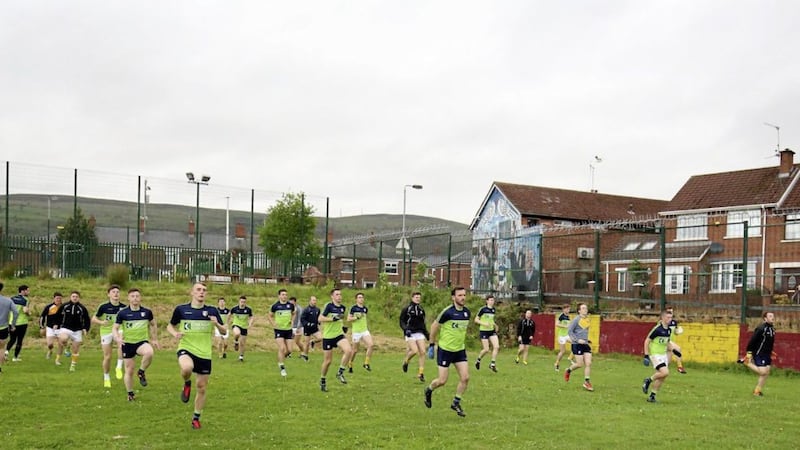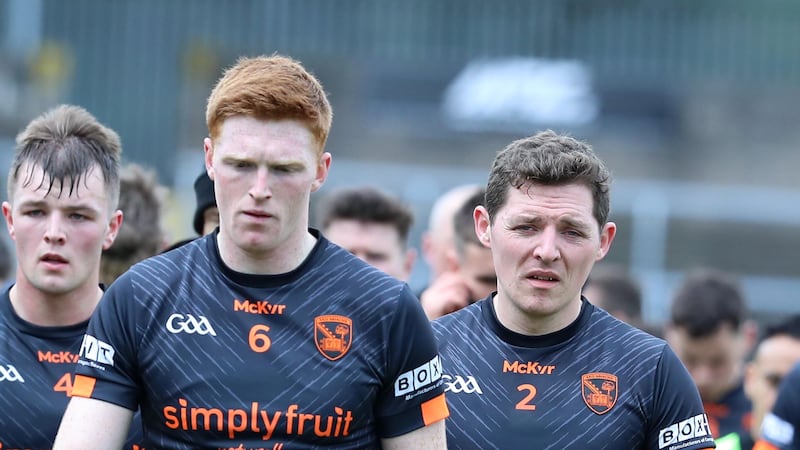FOR Nathan Tobin, isolation wasn’t a problem.
You might not know the name, but you’ll remember the tale.
His mother filmed her young goalkeeper practicing on his own by kicking the ball off the concrete at the foot of their garden wall.
Decked out in his full Leeds kit, he would plunge towards the ball as it came hurtling back at him.
The 27-second video went viral.
Big names from the world of goalkeeping queued up to get in touch.
Companies latched on and offered him gear.
It showed great ingenuity for a child of the iPad generation.
No fancy gimmicks. No paying £100 for a gizmo to throw the ball back at him. No reason for the lack of a playmate to stop him practicing.
He just wanted to play, and he found a way.
If this break from organised sport has taught us anything, it’s that there’s still much to be said for such innovation.
There are times when it’s important to coach, and there are times when it’s important to just play.
In their book ‘Youth Development in Football: Lessons from the world’s best academies’, authors Mark Nesti and Chris Sully dissected the dos and don’ts of dealing with young players.
Referencing Dr Anders Ericsson’s theory that achieving extraordinary performance requires 10,000 hours of deliberate practice, the authors note that “some of the very best clubs in the world for youth development that we have visited and studied spend a sizeable part of their time on free play and small-sided games.
“Much of this appears to be an attempt to replicate the football that was played by children in an earlier period, whether on the streets, in the backyard or on any piece of spare land.
“This was usually a highly competitive and skilful mini form of the game carried out without the guidance of adults or coaches.
“Such environments were ideally suited to the development of close control, touch, physical resilience and decision making in tight spaces – some of the most essential skills and traits that we would expect to see in the elite level professional player.”
These clubs have spent millions to come to the conclusion that less is more.
It’s too easy to just blame coaches, for if organised play did not exist, then for many there would be no form of play at all.
Structure is often craved not just by those trying to find a way to the top, but also those who haven’t the self-motivation to kick the ball off the garden wall for hours.
If there isn’t a time and a place to be, then the iPad will win.
But Gaelic football has lost some of its spontaneity.
On a balmy Friday evening in the height of summer, there are only three words any man wants to hear.
‘Pick two teams’.
Is there a worse specimen on land than the man who sees the sun out and sets up a series of tackling drills?
There is no punishment that could adequately make them pay for their crimes.
In Corofin in the mid-1980s, Frank Morris pulled together an idea to structure and streamline underage coaching in the club for the first time.
His entire emphasis was on kicking the ball. They train at Belclare and every Saturday morning, every youth footballer in the club is there.
“One of the key things, again from Frank’s coaching, is games with no soloing whatsoever,” former Galway star Aidan Donnellan told The Irish News before the All-Ireland club final, which saw them complete an unprecedented three-in-a-row.
“No hop, no solo, no handpass. Kicking only.
“Kick it out, kick, kick, kick it over the bar. And use both feet.”
When St Pat’s Maghera were winning MacRory and Hogan Cups under Adrian McGuckin and Paul Hughes, their training sessions would often have followed a familiar pattern.
A few very basic drills, such as kicking across and back, and then straight into a game before some hard running.
Hughes always told the players: ‘If the Americans had this game, they’d ruin it’.
The Americans haven’t ruined it, and nor have our own, but in these pondering days you have to ask yourself how much coaching is too much coaching?
You know it’s overdone when coaches don’t trust their players.
That manifests itself every week on sidelines up and down the country, right to the top level.
It’s no coincidence tha Jim Gavin and Brian Cody have won what they’ve won.
They don’t stand for 70 minutes in Croke Park barking at their players to run here, switch it there, come into that space.
Their work is done on the training ground, and as Frank Morris would say, the secret is that there is no secret.
Kilkenny’s training games are famous for their intensity. But it’s the simplicity too.
Two teams are picked and they go flat out at it. Mistakes are made, and there is no better place to learn from them.
The lessons are learned and gradually, the decision-making process in a player’s head improves.
That’s the only way you can come to expect the unexpected, and be able to react when it arrives.
The Learning Pyramid, created by the National Training Laboratories in Maine, illustrates the percentage of learner recall associated with various approaches to teaching.
Around 30 per cent of what is taught in a demonstration is remembered.
But when you actually practice something yourself, most people will retain 75 per cent of what they learn.
Orchestrated drills are the equivalent of a demonstration. You can tell players where to stand and where to run, but it doesn’t help them make a decision in a game.
Letting them make mistakes and figure it out the hard way is not only more fun, but a better way to learn.
Let the kids play - and the adults too.









